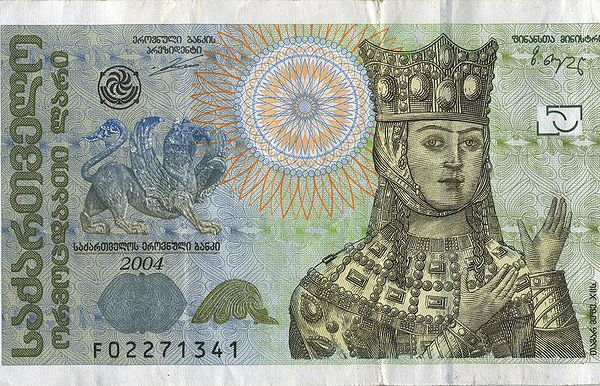I’m flying to the country of Georgia tonight on assignment. Knowing how unfamiliar our currency is around the world, I went to a change bureau down the street to turn a few Sheqels into Euros. On stepping in, the bureau’s owner was engaged in a conversation in Russian with an elderly gentleman. Russian is a common language around these parts, as Russians make up the single largest expatriate community in our immigrant society.
When I reached the window, I learned that the bureau owner was not Russian. On the television set behind his back, in captions adjoining a news item, appeared the most beautiful letters I know:
საქართველო.
“Hey”, I pointed at the set, “You’re Georgian.”
“Yes,” He smiled, “You can tell the letters?” He was in his fifties and spoke good Hebrew, I assumed he arrived with the big wave of Georgian Jewish immigration in the early 70s.
“I’m flying to Tbilisi This evening. I was going to buy euros, but… do you have any lari?”
“Maybe I do.”
He fished through the safe which served as stand for the television and found some. There were 50 lari bills, bearing the portrait of Queen Tamar, who ruled nearly a millenium ago. There were 100 lari bills with the image of Shota Rustaveli, author of “the Knight in the Leopard’s Skin”) the greatest poet to have ever lived between the Black and Caspian seas, and one of the greatest to have ever died in Jerusalem. I savored the letters again:
რუსთაველი
Rustaveli.
Then, after indulging in the curvy magic, began savoring what that moment told about my city and the land in which I live. Many readers of this blog and indeed many people around the world are critical of the very presence of an immigrant society on this soil. I, for one, love immigrant societies. If one can just randomly walk into an office on a mundane Tel-Avivian street and have the knight in leopard skin come to greet him, mere hours before their appointment on the banks of the Mt’k’vari river, there has to be some magic to this place.
That this immigrant society must be a much better neighbor to other societies with which it coresides, goes without saying. It also goes without saying that diversity is a gift and that every group that arrived into this country has enriched it. Holding a banknote adored with beautiful letters is only the beginning. Tel-Aviv offers every imaginable dish in world culinaria (except proper Buffalo wings, which is mysterious, since there American expatriate community here certainly isn’t tiny). Every imaginable language is spoken on its streets, from Palestinian Arabic, through the Hungarian of my grandparents to Tagalog and Sudanese Arabic of recent work immigrants and refugees.
With all my great love for Tbilisi, the same can’t be said of it, nor of Amman, nor of Prague, nor of most world cities, especially cities of this size. We can sometimes forget this richness or take it for granted. Then we are confronted with it, moments before leaving for the airport, and suddenly find new value in the return ticket.


